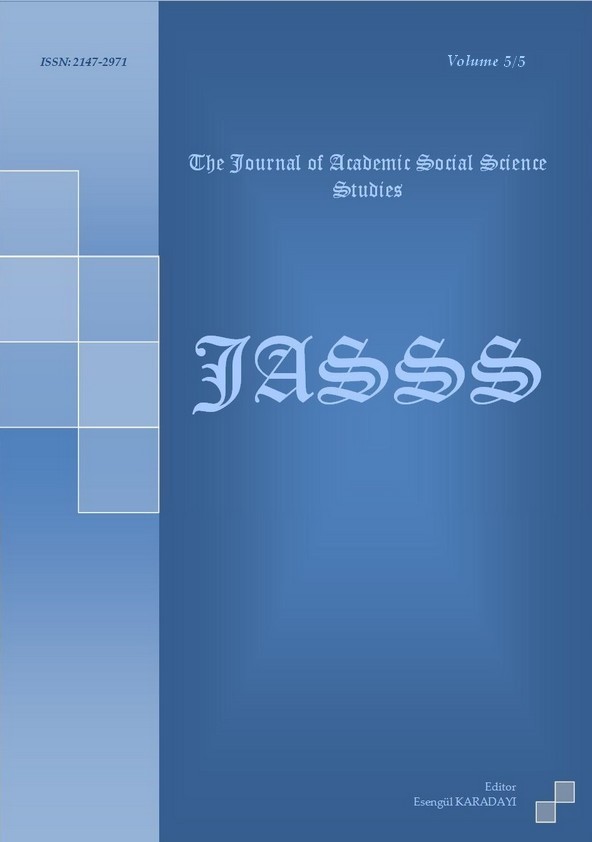Author :
Abstract
Bu makalede, tarihî ve çağdaş Türk lehçelerinden alınan örnekler vasıtasıyla Türkçede fiil çekiminin nasıl oluşturulduğu, yapısal özellikleri ve fonksiyonel kullanım alanları belirtilmiş, basit ve birleşik çekim olmak üzere iki şekilde oluşturulan fiil çekiminin genel esasları üzerine çeşitli değerlendirmeler ileri sürülerek birleşik çekim kurucusu er– (> ér–, é–, e–, i–) esas yardımcı fiilinin morfolojik, sentaktik ve morfotaktik düzlemde fonksiyonları incelenmiş, Eski ve Orta Türkçe metinlerden seçilmiş örnekler üzerinden yapısal durumu ortaya konularak düşürüldüğü kısaltmalı kullanımlar belirlenmiştir.
Keywords
Abstract
In this article, how the verb conjugation is made and its structural features and functional areas in use are analysed via the examples selected from historical and modern Turkish dialects. In terms of morphological, syntactical and morphotactical functions of the establisher of the verb conjugation, the basic auxiliary verb er– (> ér–, é–, e–, i–), are examined by propounding various determinations on the general principles of the verb conjugation which has two varieties as simple and complex conjugation. In addition the structural complexion of the usings in which the auxiliary verb dropped is determined through the examples selected from the texts from Old and Middle Turkic texts.
Keywords
- ARAT, R. Rahmeti (2007). Kutadgu Bilig I (Metin). Ankara: TDK Yay.
- BERBERCAN, Mehmet T. (2011a). Çağatayca Gülitan Tercümesi [Gramer – Metin – Dizin] (ĠÜ Sosyal Bilimler Enst. YayımlanmamıĢ Doktora Tezi). Ġstanbul.
- BERBERCAN, Mehmet T. (2011b). “Buğra Tezkiresi’nden Parçalar (Transkripsiyon – Dil Özellikleri Üzerine Bazı Açıklamalar – Tercüme) [Extracts from the Tezkire of Bugra (Transcription – Some Notes on Dialectology – Translation)])”. Turkish Studies, International Periodical For the Languages, Literature and History of Turkish or Turkic 6/4: 431-455.
- COġKUN, Volkan (2000). Özbek Türkçesi Grameri. Ankara: TDK Yay.
- DĠLÇĠN, Dehri (1946). Yusuf u Zeliha. Ġstanbul: TDK Yay.
- ECKMANN, Janoš (2005). Çağatayca El Kitabı (Çev. G. Karaağaç). Ankara: Akçağ Yay.
- EDĠSKUN, Haydar (1988). Yeni Türk Dil Bilgisi. Ġstanbul: Remzi Kitabevi.
- ERCĠLASUN, Ahmet B. (1984). Kutadgu Bilig Grameri – Fiil. Ankara: Gazi Ünv. Yay.
- ERGĠN, Muharrem (2002). Orhun Abideleri. Ġstanbul: Boğaziçi Yay.
- ERGĠN, Muharrem (2002). Türk Dil Bilgisi. Ġstanbul: Bayrak Yay.
- GABAĠN, A. von (2007). Eski Türkçenin Grameri (Çev. M. Akalın). Ankara: TDK Yay.
- GÜLSEVĠN, Gürer (2000). “Türkiye Türkçesindeki Zaman ve Kip Çekimlerinde BirleĢik Yapılar Üzerine”. Türk Dili Araştırmaları Yıllığı Belleten 1997: 215-224.
- HACIEMĠNOĞLU, Necmettin (1997). Harezm Türkçesi ve Grameri. Ankara: ĠÜ Edebiyat Fak. Yay.
- HACIEMĠNOĞLU, Necmettin (2003). Karahanlı Türkçesi Grameri. Ankara: TDK Yay.
- KORKMAZ, Zeynep (2009). Türkiye Türkçesi Grameri, Şekil Bilgisi. Ankara: TDK Yay.
- ÖZKAN, Mustafa (2000). Türk Dilinin Gelişme Alanları ve Eski Anadolu Türkçesi. Ġstanbul: Filiz Kitabevi.
- TABAKLAR, Özcan (1994). Türkmencenin Morfolojisi (ĠÜ Sosyal Bilimler Enst. YayımlanmamıĢ Doktora Tezi). Ġstanbul.
- TEKĠN, Talat (2008). Orhon Yazıtları. Ankara: TDK Yay.
- THACKSTON, W. M. (1993). Baburnama I-III. Turkish Sources XVI. Harvard University Press.
- TÜRKYILMAZ, F. (1999). Tasarlama Kiplerinin İşlevleri. Ankara: TDK Yay.
- VURAL, H., Toparlı, R. (2004). Kıpçak Türkçesi. Sivas: Dilek Matbaa & Ofset Tesisleri.





